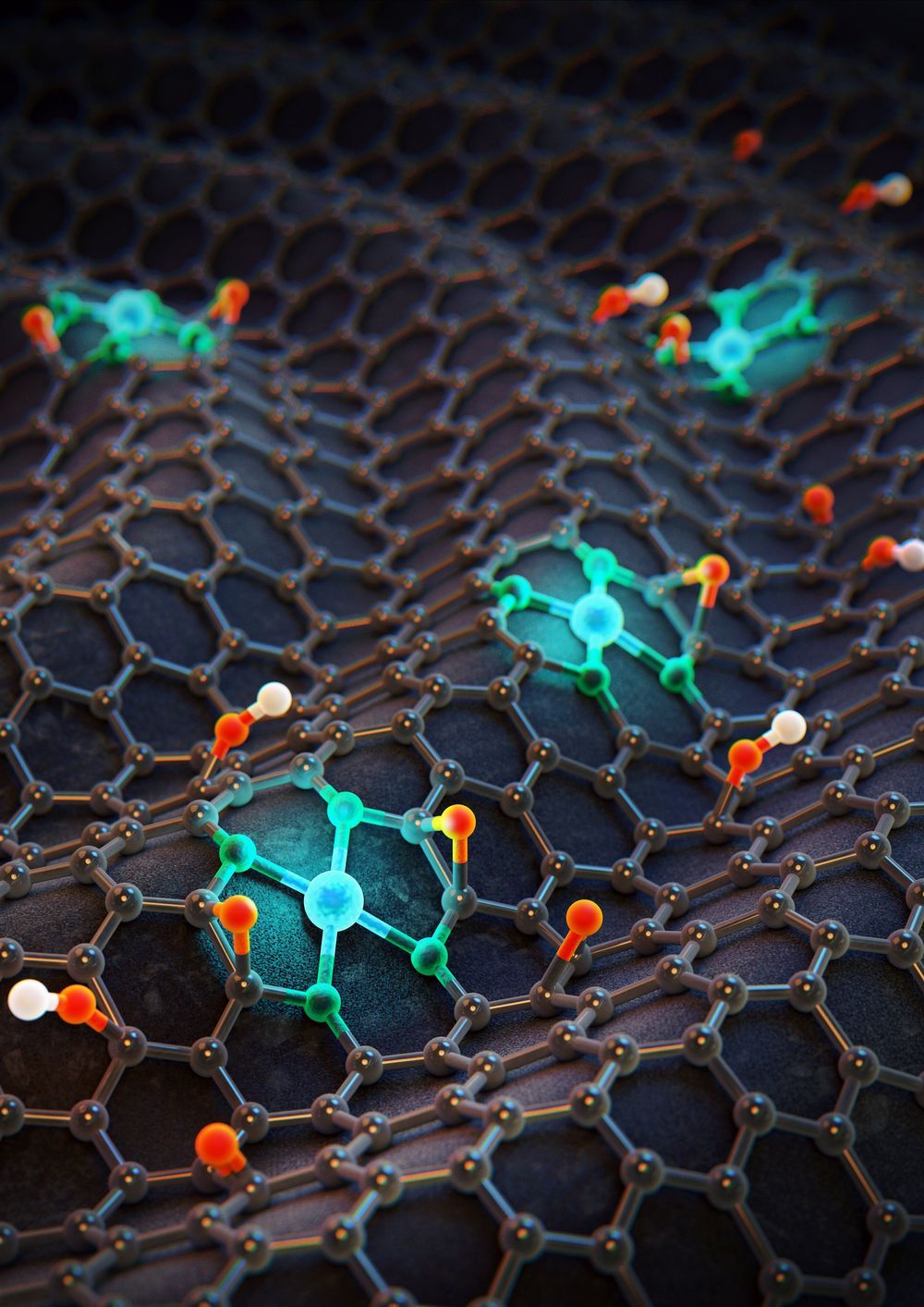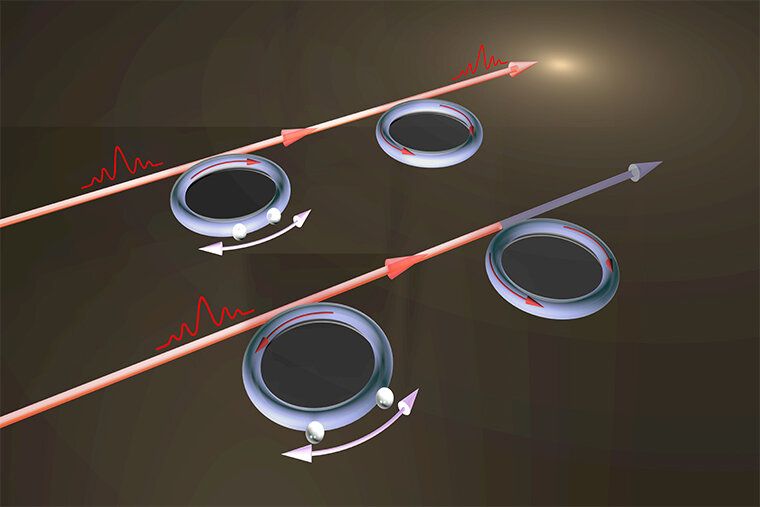Page 8032
Jan 14, 2020
IBM’s Plan to Design Solid-State Batteries Using Quantum Tech
Posted by Omuterema Akhahenda in categories: computing, quantum physics, solar power, sustainability
Batteries are the key to decarboni z ing both transport and the grid, but today’s technology is still a long way from living up to this promise. IBM seems to have decided its computing chops are the key to solving the problem.
Lithium-ion batteries are still the gold standard technology in this field, and they’ve come a long way; 10 years ago they could just about get your iPod through the day, today they can power high-performance cars over hundreds of miles.
But if we want to reach a point w h ere batteries can outperform gasoline or store huge amounts of solar energy, we need some breakthroughs. So IBM has teamed up with Mercedes-Benz and its parent company Daimler to develop new batteries that could match up to our needs.
Jan 14, 2020
Neuroscientists Discover Brain Pressure Controls Eye Pressure, Revealing New Avenues for Glaucoma Treatment
Posted by Nicholi Avery in categories: biotech/medical, neuroscience
https://www.usf.edu/…/neuroscientists-discover-brain-pressu…
If you found this article interesting please like and share it from our Facebook page: https://m.facebook.com/story.php?story_fbid=511500699478279&id=383136302314720
Researchers at the University of South Florida have discovered a novel feedback pathway from the brain to the eye that modulates eye pressure – a significant advancement in the effort to diagnose and treat glaucoma. Glaucoma is associated with increased pressure in the eye due to a reduce ability of the eye to maintain proper fluid drainage. The heightened pressure applies mechanical strain to the optic nerve as the nerve exits the eye, resulting in vision loss and potential blindness.
Jan 14, 2020
Shadow of doubt cast over China’s sovereign digital currency plan
Posted by Derick Lee in category: finance

Some have called for caution with regards to China’s digital currency, with the urgency to rush through Beijing’s own plan now lessened as Libra, which is perceived by Beijing as a major threat to China’s financial sovereignty, faces major regulatory obstacles worldwide.
The People’s Bank of China (PBOC) stepped up its plan to launch a sovereign digital currency in response to Facebook’s Libra digital currency.
Continue reading “Shadow of doubt cast over China’s sovereign digital currency plan” »
Jan 13, 2020
More Than One Reality Exists (in Quantum Physics)
Posted by Quinn Sena in category: quantum physics
New experiments addressed a decades-old theoretical question in physics, demonstrating that two realities can exist at the same time.
Jan 13, 2020
Exploit that gives remote access affects ~200 million cable modems
Posted by Quinn Sena in category: cybercrime/malcode
Jan 13, 2020
Atomic tuning on cobalt enables an eightfold increase of hydrogen peroxide production
Posted by Saúl Morales Rodriguéz in categories: computing, particle physics
IBS scientists and their colleagues have recently report an ultimate electrocatalyst that addresses all of the issues that trouble H2O2 production. This new catalyst comprising the optimal Co-N4 molecules incorporated in nitrogen-doped graphene, Co1-NG(O), exhibits a record-high electrocatalytic reactivity, producing up to 8 times higher than the amount of H2O2 that can be generated from rather expensive noble metal-based electrocatalysts.
Just as we take a shower to wash away dirt and other particles, semiconductors also require a cleaning process. However, its cleaning goes to extremes to ensure even trace contaminants “leave no trace.” After all the chip fabrication materials are applied to a silicon wafer, a strict cleaning process is taken to remove residual particles. If this high-purity cleaning and particle-removal step goes wrong, electrical connections in the chip are likely to suffer from it. With ever-miniaturized gadgets on the market, the purity standards of the electronics industry reach a level equivalent to finding a needle in a desert.
That explains why hydrogen peroxide (H2O2), a major electronic cleaning chemical, is one of the most valuable chemical feedstocks that underpins the chip-making industry. Despite the ever-growing importance of H2O2, its industry has been left with an energy-intensive and multi-step method known as the anthraquinone process. This is an environmentally unfriendly process which involves the hydrogenation step using expensive palladium catalysts. Alternatively, H2O2 can be synthesized directly from H2 and O2 gas, although the reactivity is still very poor and it requires high pressure. Another eco-friendly method is to electrochemically reduce oxygen to H2O2 a via 2-electron pathway. Recently, noble metal-based electrocatalysts (for example, Au-Pd, Pt-Hg, and Pd-Hg) have been demonstrated to show H2O2 productivity although such expensive investments have seen low returns that fail to meet the scalable industry needs.
Jan 13, 2020
Influential electrons? Physicists uncover a quantum relationship
Posted by Saúl Morales Rodriguéz in categories: materials, quantum physics
A team of physicists has mapped how electron energies vary from region to region in a particular quantum state with unprecedented clarity. This understanding reveals an underlying mechanism by which electrons influence one another, termed quantum “hybridization,” that had been invisible in previous experiments.
The findings, the work of scientists at New York University, the Lawrence Berkeley National Laboratory, Rutgers University, and MIT, are reported in the journal Nature Physics.
“This sort of relationship is essential to understanding a quantum electron system—and the foundation of all movement—but had often been studied from a theoretical standpoint and not thought of as observable through experiments,” explains Andrew Wray, an assistant professor in NYU’s Department of Physics and one of the paper’s co-authors. “Remarkably, this work reveals a diversity of energetic environments inside the same material, allowing for comparisons that let us spot how electrons shift between states.”
Jan 13, 2020
Tuning optical resonators gives researchers control over transparency
Posted by Saúl Morales Rodriguéz in categories: mathematics, quantum physics
In the quantum realm, under some circumstances and with the right interference patterns, light can pass through opaque media.
This feature of light is more than a mathematical trick; optical quantum memory, optical storage and other systems that depend on interactions of just a few photons at a time rely on the process, called electromagnetically induced transparency, also known as EIT.
Because of its usefulness in existing and emerging quantum and optical technologies, researchers are interested in the ability to manipulate EIT without the introduction of an outside influence, such as additional photons that could perturb the already delicate system. Now, researchers at the McKelvey School of Engineering at Washington University in St. Louis have devised a fully contained optical resonator system that can be used to turn transparency on and off, allowing for a measure of control that has implications across a wide variety of applications.
Jan 13, 2020
Meteorite contains the oldest material on Earth: 7-billion-year-old stardust
Posted by Saúl Morales Rodriguéz in category: particle physics
Stars have life cycles. They’re born when bits of dust and gas floating through space find each other and collapse in on each other and heat up. They burn for millions to billions of years, and then they die. When they die, they pitch the particles that formed in their winds out into space, and those bits of stardust eventually form new stars, along with new planets and moons and meteorites. And in a meteorite that fell fifty years ago in Australia, scientists have now discovered stardust that formed 5 to 7 billion years ago-the oldest solid material ever found on Earth.
“This is one of the most exciting studies I’ve worked on,” says Philipp Heck, a curator at the Field Museum, associate professor at the University of Chicago, and lead author of a paper describing the findings in PNAS. “These are the oldest solid materials ever found, and they tell us about how stars formed in our galaxy.”

















